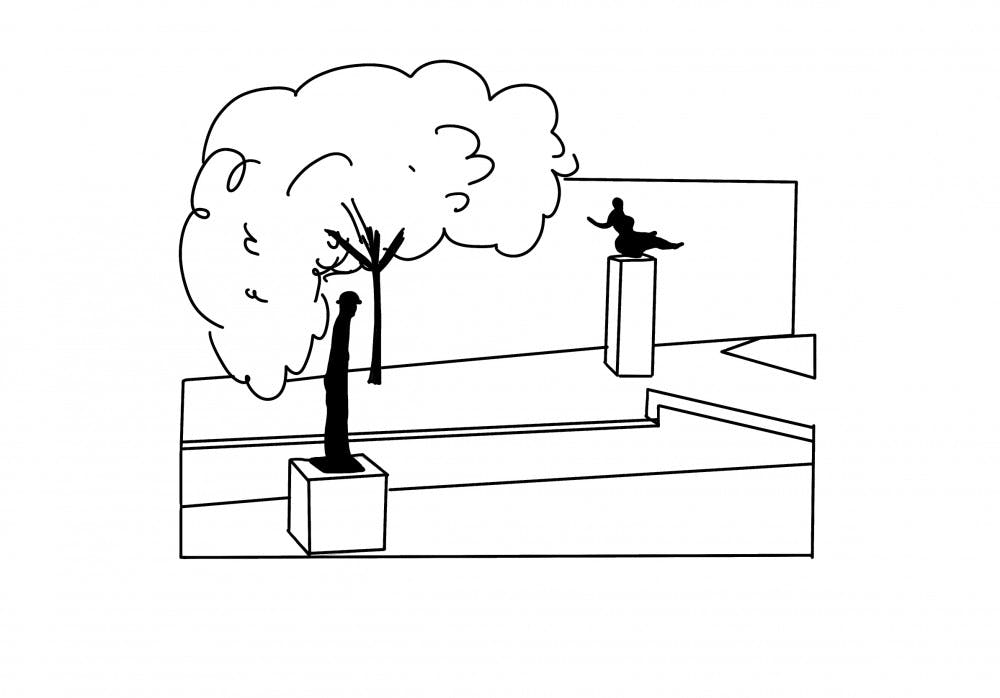Ninety years ago, three passionate, enterprising women came together with the idea to create a space devoted exclusively to modern art.
Lillie P. Bliss, Mary Quinn Sullivan and Abby Aldrich Rockefeller founded the Museum of Modern Art in New York City and held their first exhibition on Nov. 7, 1929, titled “Cézanne, Gauguin, Seurat, van Gogh” in a rented space in the Heckscher Building on Fifth Avenue. The women, alongside their board of trustees, continued renting spaces in Manhattan to host their exhibitions until 1939, when they acquired a permanent headquarters on 53rd Street. Eighty years later, the museum has just reopened following a $450 million renovation and reorganization.
Born and raised in Providence, Aldrich Rockefeller was daughter to Abby Chapman and Nelson Aldrich, who was the senator for Rhode Island from 1881 to 1911. Aldrich Rockefeller developed a passion for art during her European travels in the summer of 1894 before she met John D. Rockefeller Jr. ‘1897, who was studying at the University. She and Rockefeller are remembered for both their immense wealth and philanthropic activities, according to the Rockefeller Archive Center.
Described as “a woman of extraordinary imagination and vision” by Deborah Wye and Audrey Isselbacher, chief curator and associate curator respectively of MoMA’s Department of Prints and Illustrated Books in a 1999 exhibition, Aldrich Rockefeller was not only an essential figure in art history, but also in the local history of Providence.
Dietrich Neumann, professor of history of art and architecture, director of Urban Studies and a member of the Committee on Architecture and Design at the MoMA, noted how Rockefeller and Aldrich Rockefeller diverged in their artistic interests. Unlike his wife, Rockefeller “loved architecture but wasn’t interested in modern art,” Neumann said. Aldrich Rockefeller began her art collection during the 1920s, buying pieces when they were “still somewhat affordable,” while her husband devoted his efforts to projects such as the restoration of the Palace of Versailles. Despite Rockefeller’s different taste in art, he did financially support the MoMA.
Although Aldrich Rockefeller’s contribution to the founding of the MoMA is widely acknowledged, her connection to Providence is less well-known.
“It’s one of those things you always have to tell each generation, all these great stories of how Providence and Brown is involved in so many important things,” Neumann said, recalling his students’ surprise when he mentioned the MoMA’s link to Providence in class. He emphasized how “life-enriching” knowledge of one’s local and environmental history can be. With a rich history and vibrant cast of notable and influential figures, Providence in particular gives students and residents of the city “lots of reasons to be proud of this particular location.”
The redesigned MoMA contributes to the constant reorganization of history that occurs within every generation, Neumann said. “It’s always our history, it’s not just history that sits there.”
The renovated museum, which officially opened to the public Oct. 21, offers newly expanded spaces that aid in the process of rethinking and reorganizing history, as well as the artistic canon, Neumann added.
Professor of History of Art and Architecture Lindsay Caplan agreed, saying that the new space provides “a moment to re-evaluate the narrative MoMA has been so important in creating.”
While Martino Stierli, the Philip Johnson chief curator of architecture and design at the MoMA, also recognized that “the museum was in a way instrumental in establishing and maintaining a canonical understanding of art history,” he believes that the museum can also play a part in challenging preconceived notions.
The “new curatorial vision” that directed this expansion project aimed to “rethink in general how we think about the collection, how we can activate the collection and how we can tell more complex histories with the collection than we were before,” Stierli added.
For Stierli, the museum’s collection exists “as a kind of living organism” that previously existed in isolated parts, and now attempts to put underrepresented art in new conversations and configurations. By “no longer using the notion of permanence” and implementing a rotating system that changes the galleries every 18 months, the MoMA hopes to show that there is something new to be said about modernism. “Modern art and modern art history is actually not a linear process but is something that happens at different speeds, at different times and in different places,” Stierli said.
The redesign has synthesized the various curatorial departments into the “overarching structure of the organization,” Stierli said. He hopes the new format will provide visitors and the art itself with greater visibility. By reorganizing how exhibits are presented, the renovation intends to provide new insight to visitors as they pass through the galleries and realize how distinct art movements, created in different mediums, occur in the same time period — despite appearing entirely incongruent at first glance.
While the redesign has certainly brought significant changes to the MoMA, the museum still embodies the radical aims of its original founders, including those of Aldrich Rockefeller. Her “brilliance,” as Neumann described it, continues to be exhibited in the museum’s collection today.





